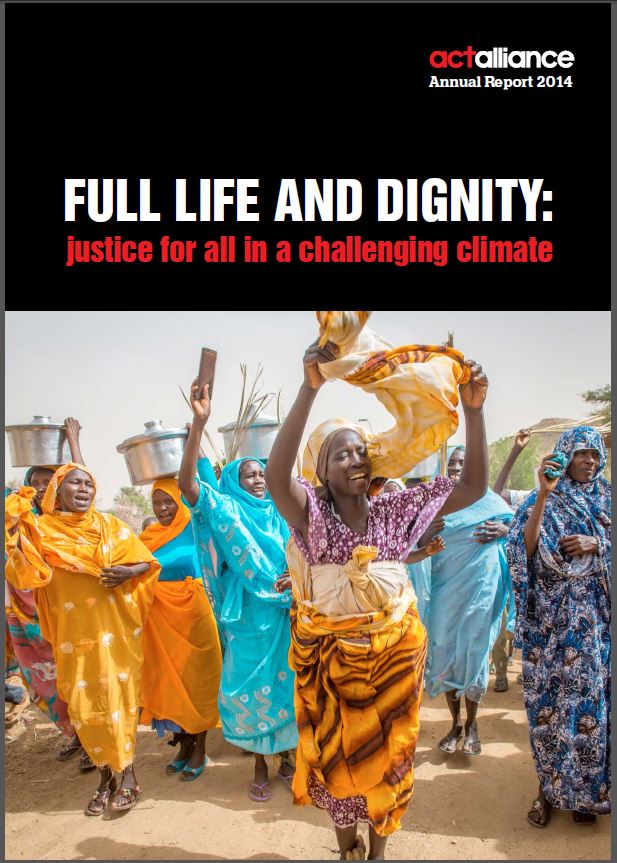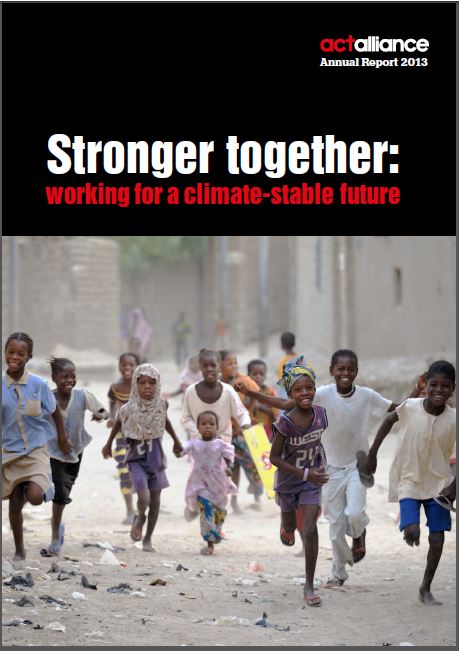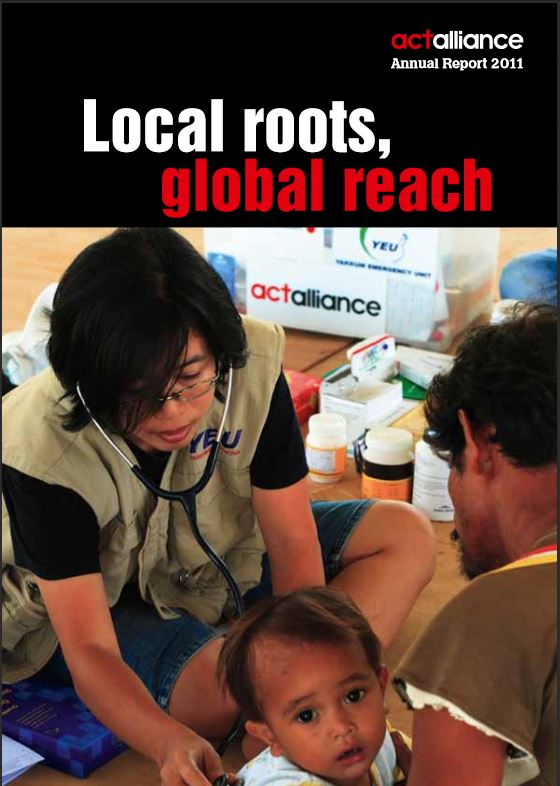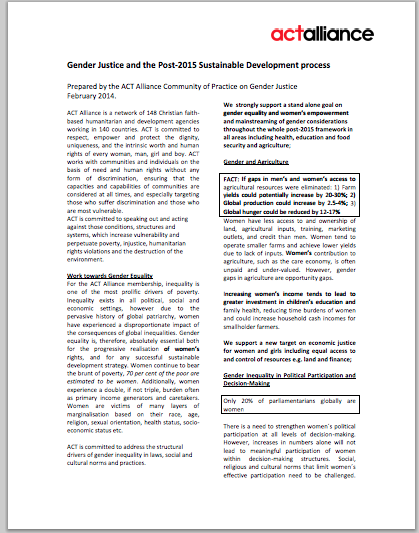ACT Alliance position on sustainable development finance towards a post-2015 agenda
Leave no one behind and close the gaps An ACT Alliance equity agenda for the post-2015 sustainable development goals
Ensuring a “climate-conscious” post-2015 development framework ACT Alliance key asks on the climate change in the context of the UN post- 2015 sustainable development agenda
Sustaining lives and livelihoods in the face of disasters ACT Alliance key asks on the post-2015 framework on disaster risk reduction
ACT Alliance Annual Report 2014

ACT Alliance Annual Report 2013

ACT Alliance Annual Report 2011

Lessons and recommendations from Japanese civil society for the post-2015 Disaster Risk Reduction (DRR) Framework
Gender justice and the Post-2015 Sustainable Development process

February 2014 – ACT Gender and post-2015 for Commission on the Status of Women